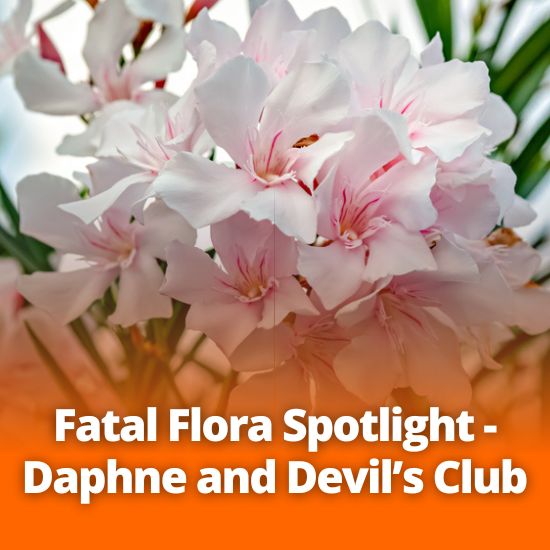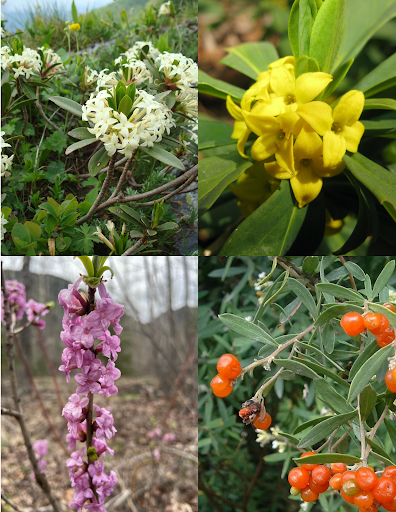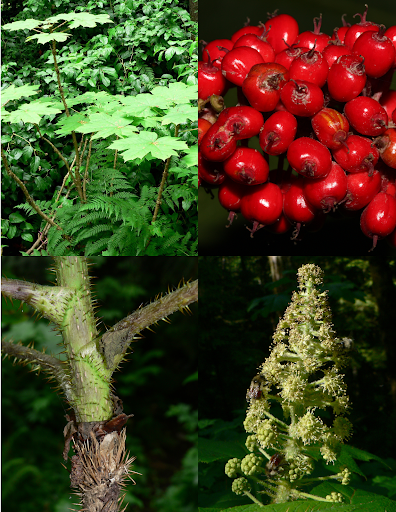
Fatal Flora Spotlight - Daphne and Devil’s Club
Canada has a broad catalogue of greenery across the nation. Many are as beautiful or plentiful as they are delicious or helpful, some of them can be dangerous and even deadly if eaten or even touched. We’re going to spotlight a few that you can find here and there so you know what to keep your fingers off of!
If you have questions or concerns about exposure or ingestion of these, or any others, here is the number for PADIS (Poison and Drug Information Service) in Alberta only: 1-800-332-1414
If you are in a medical emergency always call 911 or head to your closest emergency department!
The following does not constitute as medical advice, only a general information and safety advisory and is as accurate as we can be with Google and without a botany degree. Today we’re looking at Daphne and Devil’s Club
Daphne
Daphne
A genus of 70-95 species, they are noted for scented flowers and brightly coloured berries. They are often used as ornamental plants for their bright colours and pleasant smell.
Appearance: Small woody shrubs (range 30cm – 1m) Grow in stalkless groups of three with small flowers; leaves are thin, ovalish, and between 5-8 cm long. Berries are round with a single seed, about .5 cm around, with leathery, scarlet (or black) skin when ripe.
Colour: Small flowers in shades of lilac, pink, white or yellow.
Poisonous Parts: Whole Plant
Symptoms:
Touch: There’s a moderate potential to cause allergic reactions; sap and berry juice may cause dermatitis (skin irritation, rashes, inflammation, itchiness), and scent may affect anyone sensitive to odours.
Ingestion: Blisters on skin and in mouth; burning in the mouth, throat, and stomach; stupor; weakness; convulsions; vomiting; diarrhoea; kidney damage; coma; death.

Devil’s Club
Oplopanax horridum
With a scientific name sounding like something out of Tolkien or Gaiman, this spiny shrub can be found along the east slope of the Rocky Mountains, and the region of Lesser Slave Lake. Happily propagating in moist, dense forests (particularly old-growth conifers) in the Pacific Northwest regions of Canada and the United States its leaves hide sharp spines that pack a punch.
Appearance: Coarse perennial shrubs, ranging in size from 1-3m, with a thick single stem lined with sharp spines. The leaves are similar to maple in shape, with 5-7 lobes, about 10-30 cm wide, with more sharp spines on the underside. There are either small clusters of densely packed green-white flowers at the end of the stem or red berries.
Colour: Dark brown and green stems, bright green leaves; small greenish-white flowers; bright red berries
Poisonous Parts: Spines along the stem, leaf stalk, and underside of leaves.
Symptoms:
Touch: Dermatitis (painful swelling, welts, rashes)
Ingestion: While there are studies dedicated to its medical uses, and native indigenous peoples of Canada and the US have traditionally used it for a variety of things, we strongly recommend not eating these berries on your own for any reason.
